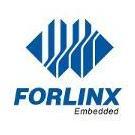Search the Community
Showing results for tags 'nvr'.
-
With the development of network technology, there is an increasing demand for storing video data over the network. As a result, surveillance systems that were previously centered around DVRs (Digital Video Recorders) have further evolved into NVR (Network Video Recorder) systems with network capabilities. NVR, which stands for Network Video Recorder, is the storage and forwarding component of a network video surveillance system. It is primarily responsible for functions such as accessing, storing, forwarding, decoding, and previewing network audio and video signals. In today's increasingly complex and widely applied surveillance scenarios, intelligence has become an inevitable trend in the development of video surveillance systems. Intelligent security monitoring is one such application of NVR intelligence. It utilizes advanced technologies and intelligent algorithms to enhance security, reduce monitoring workload, and provide real-time access, playing a crucial role in the field. They are suitable for various applications, ranging from home security to large-scale commercial and urban surveillance projects. With the constant advancement of technology, intelligent security surveillance systems will continue to evolve and improve, offering advanced features and greater convenience. Intelligent NVR can be utilized in security surveillance and, with algorithmic support, can achieve the following scenarios: Face Recognition Alarm: Comparative recognition of the target face can be performed through video or image streams. Fire Incident Visualization and Early Warning: Intelligent detection and identification of smoke and fire points, issuing early warnings before the fire spreads. Intrusion Detection and Alarm: The system can monitor an area and provide alerts for unauthorized intrusion by using object recognition and motion detection. Parking Space Vehicle Recognition: By using object recognition or license plate recognition, the system can detect and identify unauthorized or improperly parked vehicles (underground garages). Requirements Cases: A video surveillance system solution provider plans to launch a high-performance NVR (Network Video Recorder) device to meet the diverse monitoring needs of smart security applications. In the envisioned product positioning of this customer, this NVR can provide intelligent monitoring functions in various security surveillance scenarios, such as face recognition alarms, visualized fire hazard alerts, intrusion alarms, parking space vehicle recognition, etc. Unlike traditional NVRs, the implementation of intelligent monitoring functions requires AI computing power on the NVR's main control unit. This is because it needs to be able to run intelligent monitoring algorithms locally while performing traditional functions such as access, storage, forwarding, and decoding. Based on the above reasons, Forlinx Embedded recommends the FET3568-C SoM to customers as an ideal iteration tool for security back-end NVR devices. It adopts the RK3568 processor produced by Rockchip, featuring a quad-core Cortex-A55 architecture with a clock speed of up to 2GHz. Additionally, it integrates a 1 TOPS NPU, which enables lightweight local AI computing. It natively supports dual Gigabit Ethernet, which can be used for connecting network cameras, network communication, etc. It supports SATA 3.0 and PCIe 3.0, which can be used to connect mechanical hard drives or solid-state drives, enabling local storage of large video data capacity. It supports five different display interfaces: HDMI 2.0, eDP, LVDS, RGB Parallel, and MIPI-DSI. It also supports simultaneous and separate display on three screens, maximizing local preview and operation convenience. With the user-friendly model conversion tool RKNN-Toolkit, the FET3568-C allows for one-click conversion of popular architecture models such as Caffe, TensorFlow, TF-Lite, ONNX, PyTorch, Keras, and Darknet. This tool assists engineers in swiftly developing functions like face , object, action, license plate recognition, etc. Additionally, RK3568 supports various video input/output interfaces and offers hardware decoding of high-definition formats such as H.264, H.265, and VP9 at 4K resolution. It can decode multiple video sources simultaneously, making it highly compatible with NVR devices. Originally published at www.forlinx.net.
-
- rk3568 som
- surveillance system
-
(and 1 more)
Tagged with:

